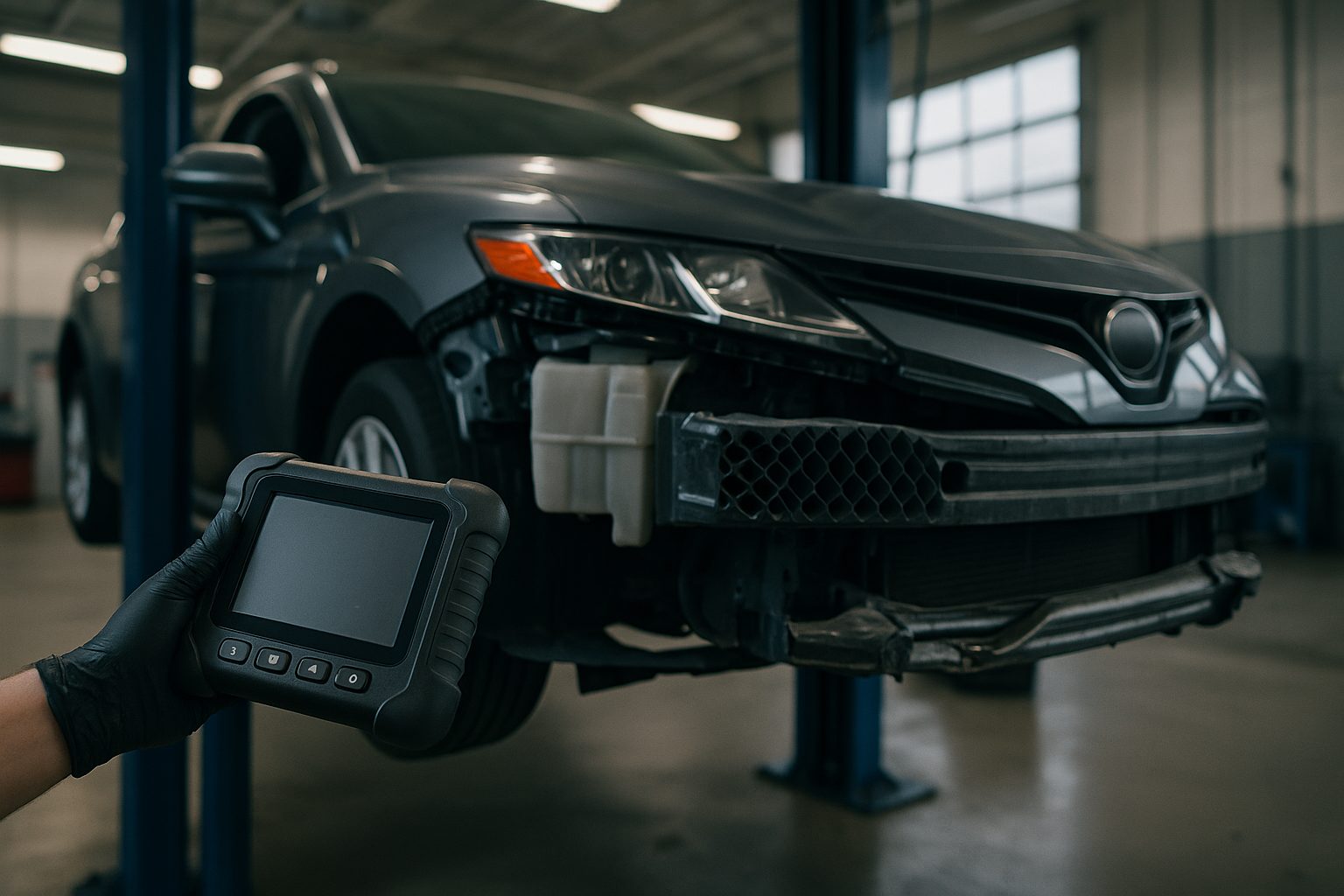Car Wreck Attorney: What Hidden Vehicle Damage Says About Impact Severity
Not every serious crash leaves a smashed hood or a missing bumper. Many wrecks look “minor” from the outside, yet the vehicle tells a different story once a trained eye looks underneath. As a car wreck attorney, we rely on hidden damage to show how hard the impact really was; evidence that can support your injury claim even when photos at the scene look modest.
Why “Hidden” Damage Matters
Modern cars are built to send crash energy away from the people inside. They do this with crumple zones, load paths, and safety systems that deform in controlled ways. That means a car can look okay at a glance while key parts under the skin are strained or broken. Those parts often tell us more about how severe the impact was than a quick look at the exterior.
Quick Look: Signs Your Crash Hit Harder Than It Looks
- Hood, fenders, or doors that no longer line up or latch smoothly
- Ripples in the floor pan or trunk well
- Creases at the base of the windshield (A-pillars) or along the roof rails
- Seat belts that locked up, feel “stiff,” or show fraying/marks
- Steering wheel off-center or vehicle pulling to one side after impact
- Coolant, transmission fluid, or oil leaks after a front or rear hit
What Crash Engineers Look For
Below are common hidden-damage areas and what they can say about impact severity. These clues help us explain the wreck to insurers and to a jury if needed.
1) Energy Absorbers & Bumper Reinforcements
Behind the painted bumper cover sit foam or honeycomb “crash boxes” and a metal reinforcement bar. If these are crushed or the crash boxes are folded, the car absorbed meaningful energy, even if the cover looks fine. That supports a higher-severity impact.
2) Frame Rails & Crush Cans
Modern unibodies have built-in crush points. Kinks or “S-shaped” bends in these rails show force traveled deep into the structure. A rail kink usually means the hit exceeded low-speed thresholds.
3) Radiator Support, Condenser, and Cooling Pack
Leaking coolant, a bowed radiator support, or a pushed-back condenser means the front end moved more than the bumper shows. Heating or transmission problems after a crash often trace back to this hidden damage.
4) A/B-Pillars, Rockers, and Roof Rails
Small creases near door hinges or the roof can signal body twist. When pillars deform, forces went around the cabin—not just the bumper. That aligns with higher energy transfer.
5) Floor Pan, Trunk Pan, and Spare Tire Well
A rear hit that buckles the trunk floor or lifts the spare tire well shows the impact traveled past the rear bumper. In front hits, ripples in the floor pan tell a similar story.
6) Suspension, Subframe, and Alignment
Camber or toe knocked out of spec, bent control arms, cracked subframe bushings, or shifted subframe bolts all point to significant force. If it won’t align within spec, that’s a strong severity marker.
7) Engine & Transmission Mounts
Sheared or torn mounts and pushed-back engine accessories indicate a deeper crush and higher delta-V (change in speed at impact).
8) Seat Belts, Airbags, and Pretensioners
Seat belts often leave “transfer marks” on clothing or show webbing stretch. Locked retractors, fired pretensioners, or deployed airbags signal forces above design thresholds. Even without an airbag deployment, fired belt pretensioners are a big clue.
Five Ways Hidden Damage Supports Your Injury Claim
- Explains symptoms: Structural and belt system damage helps explain whiplash, back, or shoulder injuries.
- Rebuts “minor impact” arguments: If rails kinking or pretensioners firing show real force, the “just a fender-bender” narrative loses steam.
- Proves repair complexity: Subframe shifts, cooling pack damage, or pillar creases mean longer, costlier repairs; evidence insurers take seriously.
- Anchors crash reconstruction: Hidden damage pairs with photos, estimates, and sometimes event data to estimate speed change (delta-V).
- Shows safety system performance: If airbags or pretensioners activated, we can link that to force levels and occupant loading.
Where to Look: A Simple Inspection Roadmap
Use this list after you’re safe and medically checked. Do not crawl under a damaged car; let a shop handle deep inspections.
- Front/Rear: Look under the bumper cover for crushed foam, broken sensors, or bent reinforcement bars.
- Underhood: Check radiator support straightness and look for fluid leaks or cooling fans rubbing.
- Sides & Roof: Scan door gaps, hinge areas, and the base of the windshield for small creases.
- Trunk: Lift the mat; check for ripples or a “popped” spare tire well.
- Cabin: Pull seat belts fully out—look for fraying, glazing, or stiffness; note any airbag or SRS light.
- Wheels: Look for bent rims, torn tire sidewalls, or wheels sitting “tucked” or “pushed out.”
Paper Trail That Helps Your Case
Insurers respond to clear documentation. Here’s what to collect and why it matters:
- Repair estimate with photos: Ask the shop to photograph hidden damage and note structural operations.
- Pre- and post-alignment sheets: Show whether the car can be brought back into spec.
- Supplemental estimates: Hidden damage often shows up after teardown. Keep every revision.
- Diagnostic scans (pre & post): Airbag, pretensioner, and sensor codes help prove event severity.
- OEM repair procedures: These confirm why certain parts must be replaced, not repaired.
Common Myths—And the Facts
- Myth: “No airbags = small crash.”
Fact: Airbags deploy based on direction and thresholds. Belts can still fire, and structure can still deform. - Myth: “The bumper looks fine, so the impact was light.”
Fact: The cover is plastic. The absorber and reinforcement behind it tell the real story. - Myth: “If it drives straight, it’s okay.”
Fact: Many cars will “track” straight with bent parts; alignment specs and tire wear tell the truth.
When to Tow, Not Drive
If any of the following are true, play it safe and tow the car:
- Fluids leaking or temperature climbing
- Steering feels loose or wheel is off-center
- Tires rubbing, wobbling, or showing cords
- Seat belt or airbag warning lights on
- Hood won’t latch or lights won’t aim correctly
How We Use This Evidence
Our team gathers photos, shop records, diagnostic scans, and alignment data. We compare them with crash reports and, when available, event data recorder information. We also use respected safety sources to explain crashworthiness to insurers and, if needed, to a jury:
- NHTSA: Vehicle safety ratings & crashworthiness
- NHTSA: Vehicle crashes & safety tech
- IIHS: Crash tests & structural performance
Simple Checklist to Bring to Your Free Consult
- All repair estimates (including supplements) and parts lists
- Before/after photos and any teardown images
- Alignment sheets and scan reports (SRS/airbag codes)
- Medical records from first 14 days and follow-ups
- Insurance communications and claim numbers
Hurt in a Car Wreck? Let the Hidden Damage Speak for You.
Even “minor” looking crashes can cause serious injuries. We know how to read the hidden signs and prove impact severity. Call Attorney Dean Boyd at 806-242-3333 for a free consultation in Texas or New Mexico.


